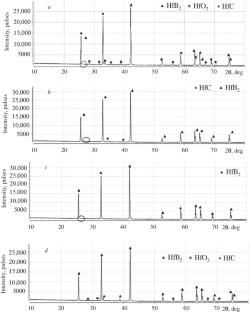通过碳热还原法合成二硼化铪陶瓷粉末
IF 0.6
4区 材料科学
Q4 MATERIALS SCIENCE, CERAMICS
引用次数: 0
摘要
研究了通过碳热还原氧化铪获得二硼化合铪的过程,包括在真空炉和火花等离子烧结装置中进行热处理。当炉料在真空炉中进行热处理时,在 1500 - 1700°C 的温度范围内获得了以存在次生结晶相为特征的二硼化铪粉末。采用火花等离子烧结法,在 1500°C 的温度下获得了具有细粒均匀结构的单相二硼化铪粉末。本文章由计算机程序翻译,如有差异,请以英文原文为准。


Synthesis of Hafnium Diboride Ceramic Powders by Carbothermal Reduction
The process of obtaining hafnium diboride via the carbothermal reduction of hafnium oxide, which involves heat treatment in a vacuum furnace and a spark plasma sintering unit, was studied. When the charge was heat treated in a vacuum furnace, hafnium diboride powder characterized by the presence of secondary crystalline phases was obtained within a temperature range of 1500 – 1700°C. Monophase hafnium diboride powder having a fine-grained uniform structure was obtained using the spark plasma sintering method at a temperature of 1500°C.
求助全文
通过发布文献求助,成功后即可免费获取论文全文。
去求助
来源期刊

Glass and Ceramics
工程技术-材料科学:硅酸盐
CiteScore
1.00
自引率
16.70%
发文量
85
审稿时长
6-12 weeks
期刊介绍:
Glass and Ceramics reports on advances in basic and applied research and plant production techniques in glass and ceramics. The journal''s broad coverage includes developments in the areas of silicate chemistry, mineralogy and metallurgy, crystal chemistry, solid state reactions, raw materials, phase equilibria, reaction kinetics, physicochemical analysis, physics of dielectrics, and refractories, among others.
 求助内容:
求助内容: 应助结果提醒方式:
应助结果提醒方式:


